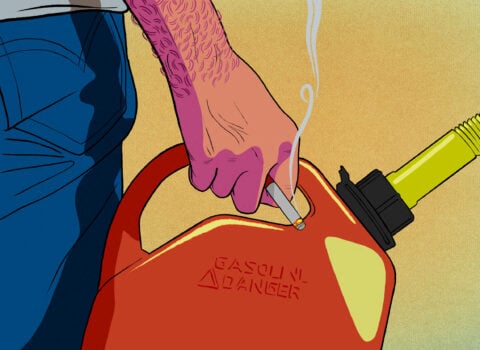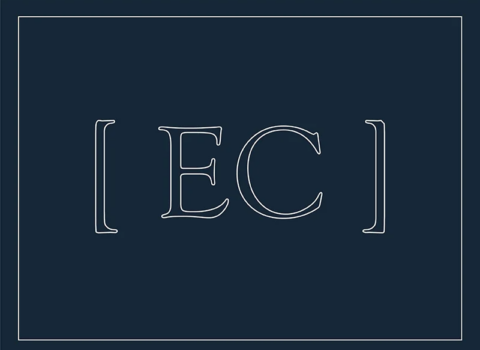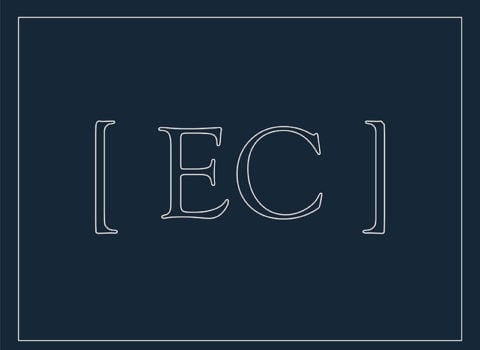Al Gore once leaned in close, in a kitchen, late at night, at a party at a film festival, as someone snapped a photo of us. I never circulated it; Al Gore doesn’t go with my image.
The writer and artist Benjamin Weissman had a girlfriend in high school who was simultaneously Jimmy Page’s girlfriend and if I was him I’d tell everyone. I’d never stop. But Ben is modest. Lots of people talk and few of them know. I thought I had a brag that I once dated a guy who’d dated a woman who’d dated Slash. But compared to Jimmy Page, Slash is Al Gore.
In the Nineties, I used to see Dee Snider from Twisted Sister in the elevator of the apartment building on Amsterdam Avenue where many of my relatives lived viably under rent control. Dee Snider’s bandmate Jay Jay French lived in the building, and might even still, unlike my relatives, who were ejected. If Slash is Al Gore, Dee Snider is Tipper.
You can encounter a celebrity but you cannot know one, because the very status of celebrity is born of image and of distance—of unknowability. Celebrity is a projection that will dissolve upon genuine contact. Made familiar, personage becomes person. And so the celebrity encounter is a clean brush. It doesn’t penetrate into the domain of the interpersonal. It is spectral. “A true star never arrives,” observes the fictional screen idol who narrates Yukio Mishima’s novella Star.
If the function and properties of fame are fixed, granting this status can be personal, irregular, and irrational. A pure and classical instance of my own celebrity encounters was my brush with the artist Dash Snow, probably not even marginally famous to you. This was in 2007, and Dash had been on the cover of New York magazine alongside the artists Dan Colen and Ryan McGinley, the three of them spooning on a bed in their boxers, under the headline warhol’s children. Pale and passed out, or posing that way, they looked sordid and angelic, especially Dash, with his long blond hair and the tattoos scattered along his arms and side like sketch pad doodles. A lot of people read that article, which showcased these artists and their friends as a wild scene in which hotel rooms were trashed and shredded into “hamster nests.”
Dash Snow came to Los Angeles for a gallery show. I went to the party his gallerist threw at the Taix restaurant. I’d just had a baby. Dash Snow was glossy and charismatic, without the faintest whiff of destruction. When he and I were introduced, he took my baby and held him up in a crowded bar full of drunk people and said, with tender wonder, “Oh, he has huge hands.” He anointed my baby, and then he kept moving through the room as if signing autographs. Sometimes celebrities confirm the stereotype and sometimes they flip it, and either way they give you a memento, a story.
Dash had just had a baby himself, with a woman who was also there, although their newborn was off-site, with a sitter. I sat at a table and breastfed mine while a friend told me about his love affair, which later ended badly, with the smashing of his windshield and matching restraining orders. Both lovers are now flourishing, if separately. Dash Snow is dead. My baby is sixteen.
In 2014 I met Bruce Davis, Manson family hit man. This was at California Men’s Colony. I was touring a prison industry workshop where prisoners printed registration stickers and put them into glassine bags. The supervisor who inspected each sticker looked familiar to me. He had his own workbench, and the nameplate confirmed things: bruce davis, quality control. I stared at him and he stared back, with a look that I recorded in my notebook as “Christian vacancy.”
When Manson-adjacent Kenneth Anger died this May, I remembered an encounter I’d had with him, or rather one that my husband had. We were sitting down at a Chinese restaurant as Anger, at a different table, stared at my husband. Then he came over and asked in a breathy voice, practically whispering in my husband’s ear, “How tall are you?” He wore a silky Adidas tracksuit like he was Fidel Castro except beardless, a beardless revolutionary of the cinematic medium.
I was brought along to a large party at Vidal Sassoon’s private residence a couple of years before his death. Not knowing anyone, I lurked in a hallway admiring modernist furniture. Vidal approached and whispered in my ear. He wasn’t being flirtatious. He had laryngitis. “I got it for a song,” he rasped of his Jean Prouvé bureau.
The star encounter I consider my first was the man seated next to me on a plane who told me he was the voice behind the Taster’s Choice instant coffee jingle. I was in my teens, when that jingle played during soaps. He even sang it. As a young adult, I served PBS TV host Huell Howser at a restaurant in San Francisco’s Mission Bay. At that same restaurant, I served Jack Nicholson, and my only takeaway was that he was just like everyone else I served but more so, in his ability to treat the person he was with as an equal and his waiter as a ghost.
I spotted former French prime minister Lionel Jospin while eating at a restaurant in Paris. Everyone acted casual about it. That’s Paris. On a recent trip there, Catherine Deneuve was at the next table. My Parisian friends shrugged. Big deal. My mother once saw Tom Waits at Greens restaurant in Fort Mason and to her it was a very big deal. Her joke to everyone was, “I had lunch with Tom Waits.” I actually met Tom Waits, unlike my mother, but it had no frisson. I understood that he didn’t want to deal with meeting anyone or having to interact and so we didn’t.
I saw John C. Reilly on a park trail and he said hi like he knew he was recognizable and wasn’t going to pretend he was a civilian. Spike Lee did the same thing, when I was crossing Bleecker and he was at the red light, in a car, his window down: How you doing. I recently saw Angelyne, famous for those billboards of her with her pink Corvette. She was at Lassens, inspecting the ingredients of green juice. I know someone who met her, back in her prime, in a gas station in the Valley, and the rumor is that they decamped to a motel and had sex. At Lassens she looked deep in battle resisting her age, but who am I to judge? I too will get old; to some, I am old.
I was on a plane next to that guy who wears all leather and a leather cowboy hat and sits courtside at Lakers games (Google tells me his name is James Goldstein). He was sun-cooked to the terracotta of southwestern pottery and he was drinking that same green juice I’d seen Angelyne inspect. I avoid that juice.
I was once in line for security behind Ice-T and a blond woman in white spike heels who I believe is his wife. Remember Ice-T’s metal band? My hometown, San Francisco, was full of celebrity heavy-metal sightings because Metallica lived there.
I noticed recently that Jeff Koons has a cameo in the film Milk as San Francisco politician Art Agnos, which might not technically be in the category of celebrity sightings but I’m including it. Here are the famous people who went to my San Francisco alma mater, George Washington High School: Maya Angelou, Johnny Mathis, Danny Glover, 9/11 flight attendant Betty Ong, and the Pine-Sol Lady. The writer Alice Walker’s daughter went there when I did, but I didn’t know her. She only stayed a year. In her memoir, she describes Washington as huge and urban, a place where you don’t learn anything and girls bully you in trashed bathrooms whose ceilings are covered in wet tissue wads. She transferred to a small and very expensive private school that calls itself “Urban.”
I was walking down the Bowery with a friend in the late Nineties—I’m not sure what year, but it was October 7, my birthday—when a tall man with long black wavy hair, dark sunglasses, skinny jeans, a black leather jacket, and Chuck Taylors passed us, and my friend said to him, “Hey, it’s her birthday!” I assumed, as you might, that this was Joey Ramone. He bent over and kissed me on the cheek and said, “Happy birthday, girl.” As he walked away, I realized it was not Joey Ramone. It was Howard Stern.
Around the same time I went to see Larry McMurtry read at the 92nd Street Y. I’d never been to that venue or neighborhood and felt like an interloper. I was waiting for the program to start when someone bumped my chair. I turn around and it’s Susan Sontag. She’s got her shoes on the back of my chair, reclining next to Annie Leibovitz.
Later, less of an interloper, I was about to be on WNYC and the guest before me was Yoko Ono. As she came out, she extended her arms and hugged me. Not because she knew me. She was Yoko Ono and offering a hug to the taker in her midst. She’s an artist; I was in a performance.
I liked Yoko immensely for hugging me. I liked her less while watching the Beatles documentary Get Back. I chimed in a little on the misogyny, feeling she had some nerve to sit there on a monitor with the band. I was even madder to see what a terrible dancer Yoko is. My friend disagreed and said, “Yoko’s parts of Get Back are very exciting.” To me, George is what’s exciting. His loner’s plight and Liverpool accent and his lovely dark hair. For the first half of Get Back, John Lennon’s hair looks cool and greasy. When he finally washes it, before their big rooftop performance, it looks terrible, fluffy and disorganized.
Colm Tóibín told me Jackie Kennedy with her perfect everything would approach underlings in the women’s bathroom at Viking Press, where she was an editor, and Jackie would touch the cloth of their acetate blouse or their acrylic cardigan and softly gasp, “Oh, what exquisite fabric . . . and the drape of it . . . where did you find this blouse?” Viking secretaries were going in and out of the lavatory just to get Jackie cooing over their discount clothes.
I met Slavoj Žižek, who warned me never to be too chic. “It is the kiss of death!” he said.
I met Emily Ratajkowski but didn’t understand who she was. She was standing next to the son of my aunt’s very old friend. Emily R. was wearing what looked like transparent lambskin. Now, I understand that she and the son of my aunt’s friend were a couple. But at the time, I couldn’t compute that someone who looked like that would be connected to our family, who are just regular people.
Regular people, although I’ve lost the folksy excitement at meeting the singer of an instant coffee jingle. I’ve mingled with actual celebrities, but I keep my distance, and the real stars, as Mishima advises, keep theirs.
I was introduced to Anjelica Huston on a warm evening. We walked one city block together and then parted forever. Anjelica was puffing from a joint she lit with perfect sprezzatura, and then stubbed out and pocketed with equal aplomb. People stopped her to pay their respects and she handled them, their compliments, with the grace of a royal subject who has been trained for fame all her long life.
Robbie Robertson from the Band died on the same day this August as the painter Brice Marden. The single occasion on which I met them both, I was seated in between them at a dinner for Brice. They had been friends for decades, they explained. “Brice was in love with an old girlfriend of mine,” Robbie leaned in to tell me. “He had it bad.” The girlfriend was Edie Sedgwick. This was when Robbie Robertson was living in the Chelsea Hotel. “And I’m in bed with Edie and there’s this knock at the door and it’s Brice. He walks in and stands over the bed with this painting under his arm, and he wants to show it to us.”
“I wanted to show it to Edie,” Brice said. “I made it for her.”
“The painting was brown,” Robbie said. “I thought it was pretty good. But Brice leaves and Edie turns to me and goes all serious, like Hey, man. You gotta talk to your friend. I said, What do you mean? And she goes, Look, nobody wants a brown painting.That’s not gonna work. Tell him to try again in blue. Or maybe green.”
When Robbie was turned the other way, engaged with our tablemates, Brice said to me, “I made that painting brown because of Edie Sedgwick’s brown eyes. I titled it Edie. And when she responded like that, I destroyed the painting. And I did what she said. I started using green and blue.”
An extended celebrity encounter, but a pure one, because I was there to activate the story and served no other role.
The artists have been my gateway, it seems. I went to the Oscars luncheon this year as a guest of the team behind the Nan Goldin documentary. I had to squeeze past Tom Cruise as press surrounded him and aimed lights at his face, which was the orange of Tang-brand powdered drink. Perhaps that color works well for TV. Stars often seem to occupy a different plane of aesthetic reality, one attuned to the afterlife of a captured moment. I learned this long ago, after finding myself at a party with Paris Hilton and Kim Kardashian. They were behind me, waiting to get a drink, and someone took a picture and sent it to me. In the picture, I’m yammering away, while their faces are perfectly still and frozen. One facet of Jeff Koons’s genius is that he seems to remain on that frozen perfect plane. When I rang the doorbell of a not-famous Scientologist to pick up my son from a slumber party, Kirstie Alley answered the door. She was dour and disheveled. Not everyone can be Koons. Or Jackie. Or Dash. But they each give something.
“Oh, what fabric.” “Oh, his hands.” “How tall are you?” “I got it for a song.” “It is the kiss of death!” “Nobody wants a brown painting.”
I’d like to have that brown painting. There was some detail about it that Brice Marden mentioned, like maybe someone dug it out of the trash and later sold it, but I’ve forgotten that part, blinded as I was by two celebrities speaking of a deceased third, and trying to commit to memory the goodies they were sharing—the party favors of parties, and of life, that are sometimes tendered by famous strangers.









































































































